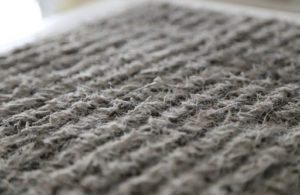So, how long does an ac unit last in arizona? Though we live and work in a beautiful state, we do have to admit: Arizona gets brutally hot. The desert heat is often a challenge to us all. The heat saps our strength, tempers flare and sometimes we just want to sit inside and cool off. Year-in and year-out, the Arizona heat takes its toll on your air conditioner’s components; causing residents to have to call an A/C repair company.
6 Biggest Air Conditioning Problems Resulting from the Arizona Sun
Your central air conditioner is no different, because it is affected by the heat just as you are. Let’s take a closer look at six common HVAC problems our technicians encounter when repairing AC units In Arizona that all stem from our state’s high summertime heat.
1. AC Frozen Not Blowing Air
You fuss with the thermostat and, Hopeful, you hold your hand over a register. You even check your home’s main circuit breaker panel to ensure your central air conditioner has power. Yet no cool air is blowing. Finally, you look at the inside unit and face the worst: the fan on the air handler is not even moving. When it should be spinning so fast you cannot see the blades, it just sits there, refusing to move cold air into your ductwork.
The fan on the air handler turns by a pulley with a drive belt linked to a motor. If the belt breaks, the fan does not turn. Your evaporator could be putting out all the cooling air you want, but if the fan does not move the air, you feel no cooling usually it means the ac is frozen and not blowing cold air.
See also: Why ignoring your air conditioner’s noise can be a costly mistake
Outside, the condenser on an older unit may also use a fan belt rather than a direct drive motor. Here you face two problems: Arizona’s high heat can take a toll on the synthetic rubber, shortening its life. The call for longer cooling operation means your central air conditioner is “on” more than it is “off,” which also wears out the belt.
In both cases, your best bet is to contact your local HVAC company for air conditioner service. Belts are easily replaced by someone who knows how to do it, but an amateur could actually damage a pulley wheel, the fan or other parts.
2. Bad A/C Capacitor
Think of a capacitor as a storage battery that gives up its whole charge in less than a second. The A/C capacitor in your system is used to overcome the inertia of the blower motor and fan, so when the system calls for cooling, the fan starts right away. The capacitor stops sending extra power once the fan motor is spinning at peak speed.
Think of Arizona heat. Your central air conditioning starts earlier in the day and stays on longer than it would in just about any other state. This means an Arizona summer may find your capacitor being used hundreds of times. It simply wears out, and once it is broken, it must be replaced.
Replacing an A/C capacitor is not difficult for a properly trained technician but could be an electrical hazard for the well-meaning but unknowing amateur.
3. Frozen Air Conditioner
It sounds ridiculous to think an air conditioner in Arizona could freeze. The inside evaporator can freeze and form a thick, icy crust over the evaporator coils. This can be caused by a few problems:
- The air handler fan is not blowing air across the evaporator coils;
- A clogged filter is not allowing enough air to pass over the coils’
- A freon refrigerant leak means insufficient refrigerant is in the charged lines to handle the cooling load.
The outside unit can freeze up, too, for several reasons. The refrigerant must pass along a line from your evaporator to the outside unit. If the line is kinked or refrigerant levels are low, the system cannot keep up with the compression and expansion cycle and the compressor will freeze over.
A clogged filter is something a homeowner can fix, by quickly replacing the dirty filter with a new one. For problems related to refrigerant, turn to your HVAC contractor for this type of air conditioner repair, since the chemicals are dangerous if released into the air.
4. Condensate Conundrum
The evaporator in your air conditioner works by chilling the warm air sent across it, which also causes moisture to literally drop out of the air. All this moisture is caught by the condensate drain pan and sent to a drain through the condensate line.
Several problems can arise from Arizona’s high heat. The condensate drain pan can rust out, allowing excess water to simply drip inside your unit and home. The best way to replace the condensate drain pan is to ask a professional to inspect your unit. The drain pan is a particular shape, with dimensions specific to your unit. Once you have the right drain pan, replacing it is very simple.
Unfortunately, the drain pan is tied into the condensate drain line, which may also need replacing. Depending on the volume of accumulated moisture your system handles, your drain line could be too small, meaning replacement is needed.
5. Filter Frustration

Before buying a new air conditioner out of frustration with your old unit, consider some basic issues that might stem from Arizona’s high heat. Your system will wear out faster than a unit in, say, Oregon, that’s true. But simply because it runs longer and more often does not have to mean an early demise. A common problem in Arizona, given our air quality issues, is a clogged filter.
Your central air conditioner requires a filter not for your lungs, but for its air handler. A filter prevents particulates and grit from getting inside the unit and your ducts, where they can damage the evaporator coils and other parts. Regular filter replacement can really help your system stay energy efficient. When we say “regular filter replacement,” we mean checking it every three to four weeks during peak A/C season and replacing as needed.
See also: Which air conditioner filter is right for my house?
You are far better off going through a half-dozen air conditioner filters in a year than having to pay for expensive repairs to a damaged evaporator coil. If you are fortunate enough to have a permanent filter, remove and clean it at least every three to four weeks.
Deep media filters may require professional servicing. Talk to your helpful HVAC contractor about the benefits of deep media filters and whether your system can benefit from them. They block significantly more dust, dander, debris and dirt than regular filters. This means they can extend the life of your entire A/C system by years.
6. Clogged Fins
Arizona has dust storms with surprising frequency and on scale other states simply never see. All that dust goes somewhere, and often it gets into your air conditioning system. If your home is inadequately sealed against outside air infiltration, that dust can find its way onto your evaporator coil, robbing you of energy efficiency and leading to breakdown.
The easy homeowner solution to indoor air quality is to track down and solve air leaks (use caulk and weather stripping). Replace your filters often, as we mentioned, but also vacuum after any dust storm, to prevent your return air supply from picking up and pulling in dust.
Clogged fins on the condenser coil (outside) can cause your system to operate inefficiently or not at all. Fin combs are the ideal tools for cleaning and straightening the thin metal fin blades.
This adjustment and repair is usually within the skill set of a homeowner, but if you are in doubt, your HVAC contractor’s technician can clean and align your condenser fins expertly. Arizona dust storms may not get any better, but your air conditioner efficiency will.
What Can Be Done?
Besides switching out or cleaning your air filter, you can do a few other things to ensure reliable cooling:
- Keep plants and lawn debris away from your outside unit;
- When purchasing a new system, have the outside unit installed in shade, if possible;
- Use a programmable thermostat to maximize energy savings;
- Consider indoor cooling temperatures of 78 degrees, at least overnight, to save money and increase equipment life;
- Plant shade trees to naturally cool your home;
- Have your system serviced annually.
Local Service
ACE Home Services can provide your Arizona central air conditioner with the TLC it needs and deserves. We send fully equipped trucks with knowledgeable technicians familiar with the unique demands of Arizona heat. We can tune up and balance your central air conditioning system, check your thermostat, safety features and filters. We can lubricate motors and clean coil fins.
By contacting ACE Home Services soon, you can also benefit from the current $79.95 A/C Tune Up Special. Our technician will perform a full tune-up and ensure your system is ready to fight Arizona’s high heat and bedeviling dust.
